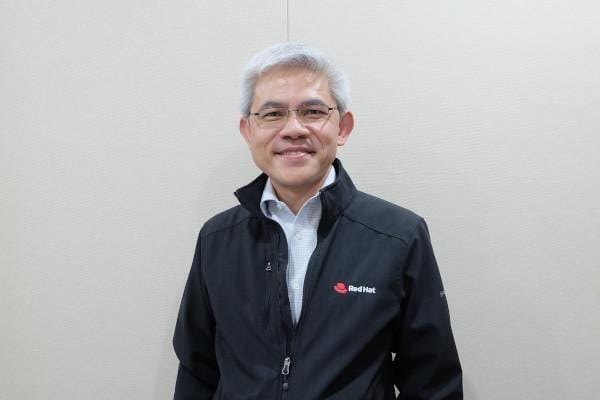By Francis Chow
Edge computing and AI are driving an inevitable transformation in the industrial sector. Manufacturers are beginning to break down the barriers between IT and OT (the actual machinery of the factory) to make shop floors more efficient and innovative to keep pace in an increasingly competitive global market.
At Red Hat, we’re focused on helping the manufacturing industry with this evolution in a few ways including: providing a consistent edge-enabled platform to simplify the complexity of deployment, maintenance and operations; delivering lower operating costs and accelerated time-to-market with quality, reliable and secure solutions; using an open source approach to innovate and collaborate faster for smarter and efficient operations.
Autonomous operations on the shop floor through a consistent platform approach
Smart factories, or software-defined factories, are playing a crucial role in amplifying the speed at which manufacturers can innovate. According to a report by McKinsey, “Smart manufacturing has the potential to create up to $3.7 trillion in value by 2025, driving growth, innovation, and competitiveness across sectors.” But this doesn’t happen overnight. To make this a reality, manufacturers need to change the traditional bespoke, single-function software/hardware integrated systems to platforms that can host multiple functions, leverage automation, and be managed at scale. They also need to build and operate these functions in the same way from the cloud to the edge and from large scale-out systems to small form factors for easier development and testing, and eventually deployment and management. Let’s look at a few examples of how Red Hat is working with our ecosystem to put this effort into action.
We’re working with Intel on a variety of strategic initiatives. We recently announced that we’re providing an automated platform with enhanced security capabilities that delivers interoperability and operational resiliency. This could range from real-time shop floor control and artificial intelligence/machine learning (AI/ML) to full manageability across servers and machinery. Ultimately, this brings greater customer choice for data gravity or edge-to-cloud style architectures and improved overall equipment efficiency (OEE).
To put this in layman’s terms – think of it like automating tasks like quality control, pressure and temperature checks, energy consumption and more. By creating software-defined factories, we’re able to redirect the energy resources from tasks to innovation.
Building modern distributed control systems
Sustainability is top of mind across the globe and manufacturers are investing in automation, control and optimization systems to support this transition. But these solutions need to be flexible, open and interoperable. By integrating with an edge computing platform, process control systems can operate with even greater precision and efficiency, bringing unparalleled flexibility to fasten the innovation feedback loop in continuous manufacturing processes.
This is where a fresh approach to distributed control systems (DCSs) can play a role in modern process manufacturing. Together with Intel, we’ve partnered with Schneider Electric to provide a modern, more innovative approach to building and operating DCSs for better functionality and operational efficiency.
A convergence of AI and edge technologies
The escalated rise of AI is undeniable and it’s moving quickly – especially in manufacturing. The industrial ecosystem demands rapid development and adoption cycles with operational efficiency and productivity. To get the most out of these opportunities, manufacturers will need to infuse AI on the factory floor by running on a modernized, secure, scalable and manageable edge infrastructure.
With this development, there’s so much potential in areas like worker safety, sustainable product design, predictive maintenance and supply chain optimization, and there’s still so much to explore. Implementing open source technologies will accelerate this level of innovation by centering a collaborative ecosystem approach to building, testing and innovating. This will also deliver the interoperability needed to leverage AI and digital twins. Today, the industrial sector lacks access to the data in their systems because it’s locked into vertically integrated offerings from their OT vendors. And while they can introduce “bolted-on” computer vision systems, they will lack the ability to fully realize AI until their underlying system is transformed – allowing them full manageability of their data.
Getting the most out of your data with intelligent data services
Growing supply chains, smart devices, sensors and more have created an influx of data in modern manufacturing. With this comes a lot of complexity, but also potential for efficient and sustainable data-driven operations.
By integrating operations with digitization initiatives and manufacturing execution system (MES) adoption, the visibility of shop floor activities to the top floor is enhanced. One example of how we’re putting this into action is by collaborating with Critical Manufacturing, a pioneer in modern MES systems, to deliver solutions to support the deployment of MES on Red Hat OpenShift for streamlined operations and a consistent experience regardless where it is deployed – on-premises or in the cloud. Work like this helps drive more effective management and integration of operational data, providing a comprehensive, unified view of the organization and optimizations.
A shift to private networks for advanced connectivity
Yesmean Luk, private networks practice lead at STL Partners, said, “private networks and edge computing are two inextricably linked technologies that are poised to improve the performance of applications and enable huge amounts of data to be processed in real time.”
Service providers will play a big role in this shift as many manufacturers will need to turn to private 5G networks to handle the massive increase in the volume of machine generated data for faster decision making, more secure and reliable connectivity, analytics, AI and more. For example, video cameras, robotics and conveyor belts can all be connected through a private 5G wireless network, with each device serving an edge application with an embedded AI/ML model that helps in inferencing and making quick decisions.
Greater security and standardization
When you have rapid changes to adapt to business needs – platform security and standardization must stay top of mind for true scalability. Last year, Red Hat sponsored a S & P Global Report on the state of edge security where we found that nearly half (47%) of decision makers say that data, network and physical/digital device security are among their biggest challenges in edge deployment. And this makes sense. The more devices you have means there’s a greater surface attack for attackers, and this can be a complex problem to have. This is why Red Hat advocates for more standardization with a common platform that has consistent and reliable security capabilities that can help manufacturers manage security at scale. This reduces operational complexity and helps organizations achieve greater interoperability.
Author is Vice President and General Manager, Edge Computing and Red Hat In-Vehicle Operating System









